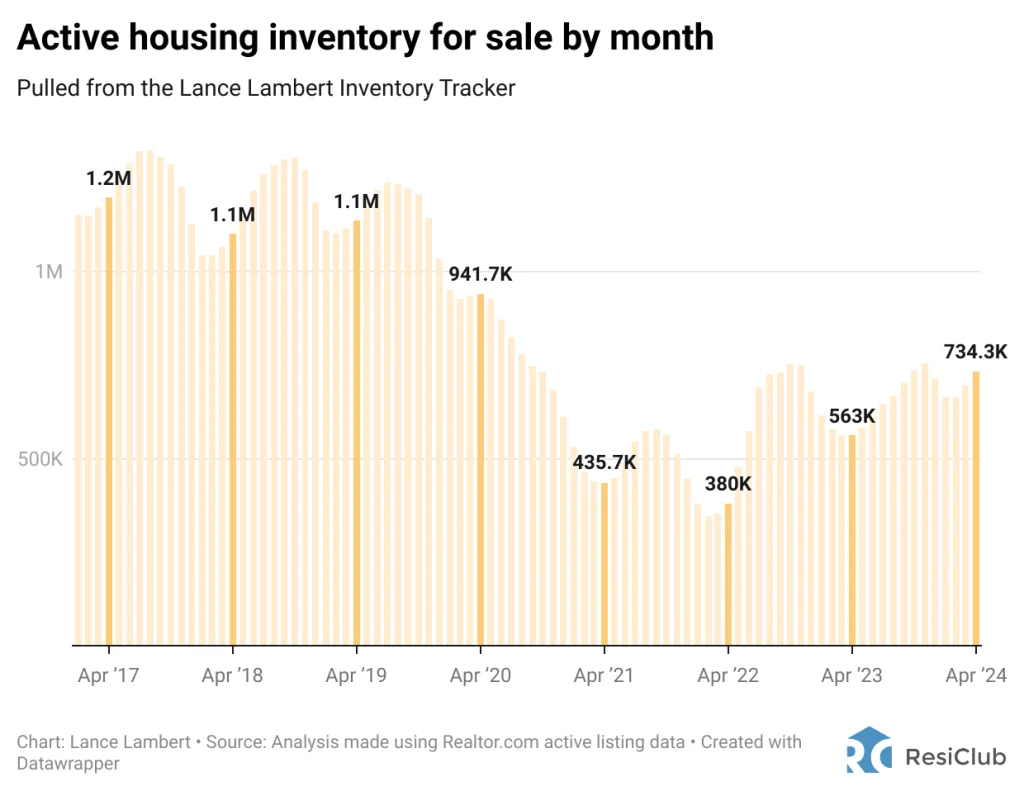U.S. home prices, as measured by the Zillow Home Value Index, rose 1.15% between March 2024 and April 2024.
Since 2000, U.S. home prices have averaged a 0.95% increase between March and April. On a seasonal level, spring is the strongest time of the year for appreciation.
While appreciation this spring has been about on par with a “normal year” nationally, beneath the surface, there’s a great deal of variation across the nation’s 250 largest metro-area housing markets.
These 10 housing markets saw the strongest month-over-month appreciation:
- San Jose, CA (+2.94%)
- Rochester, NY (+2.48%)
- San Francisco, CA (+2.41%)
- Scranton, PA (+2.37%)
- Green Bay, WI (+2.37%)
- Syracuse, NY (+2.26%)
- Youngstown, OH (+2.24%)
- Champaign, IL (+2.18%)
- Saginaw, MI (+2.14%)
- Rockford, IL (+2.13%)
These 10 housing markets saw the weakest month-over-month appreciation:
- Punta Gorda, FL (-0.05%)
- Panama City, FL (+0.04%)
- North Port, FL (+0.05%)
- Cape Coral, FL (+0.07%)
- Naples, FL (+0.09%)
- Port St. Lucie, FL (+0.31%)
- Crestview, FL (+0.38%)
- Ocala, FL (0.39%)
- Lakeland, FL (+0.44%)
- Deltona, FL (+0.51%)
The lack of appreciation during the strong seasonal window suggests that markets like Punta Gorda, North Port, and Cape Coral could be at risk of mild home price declines once we move into the softer seasonal window later this year.
The strongest housing markets this year are pockets of the Midwest and Northeast where active inventory for sale remains far below pre-pandemic levels, and markets like San Francisco and San Jose, where the AI stock boom is spilling over into the housing market.
The weakest housing markets are in Florida, which has seen the nation’s biggest spike in inventory over the past year. ResiClub's Lance Lambert Inventory Tracker has also been showing softness across Florida, in particular, Southwest Florida, for months.

Following the collapse of the Surfside building on June 24, 2021, which resulted in 98 fatalities, Florida enacted a new structural safety law that is now significantly impacting property owners. In addition to skyrocketing insurance rates, some Florida condo owners are facing substantial special assessments.
Southwest Florida markets, particularly Punta Gorda, have additionally been affected by the aftermath of Hurricane Ian in September 2022. These factors have increased the supply of damaged homes on the market, put upward pressure on home insurance premiums, and slowed migration to the area.

